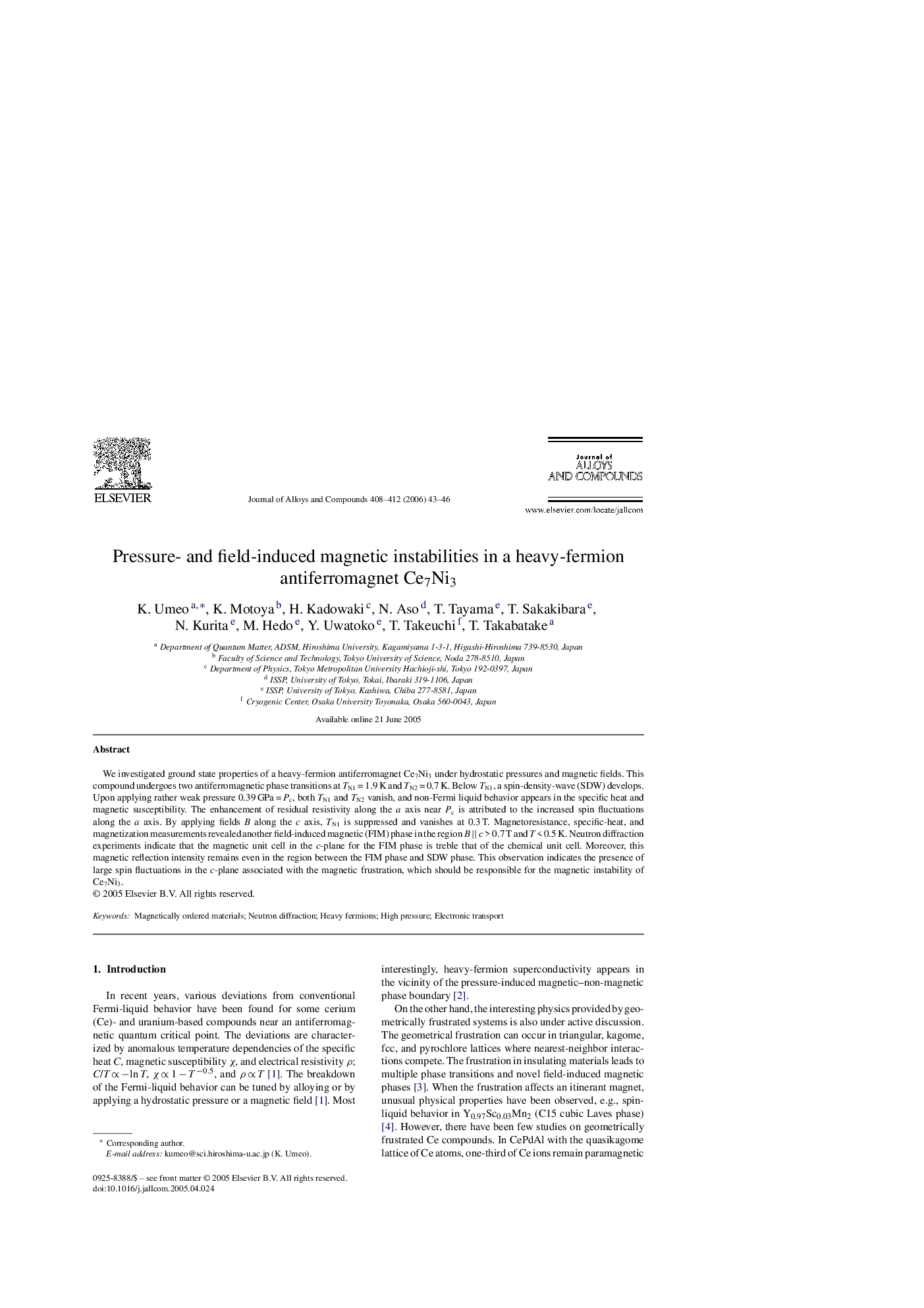| Article ID | Journal | Published Year | Pages | File Type |
|---|---|---|---|---|
| 1627822 | Journal of Alloys and Compounds | 2006 | 4 Pages |
Abstract
We investigated ground state properties of a heavy-fermion antiferromagnet Ce7Ni3 under hydrostatic pressures and magnetic fields. This compound undergoes two antiferromagnetic phase transitions at TN1 = 1.9 K and TN2 = 0.7 K. Below TN1, a spin-density-wave (SDW) develops. Upon applying rather weak pressure 0.39 GPa = Pc, both TN1 and TN2 vanish, and non-Fermi liquid behavior appears in the specific heat and magnetic susceptibility. The enhancement of residual resistivity along the a axis near Pc is attributed to the increased spin fluctuations along the a axis. By applying fields B along the c axis, TN1 is suppressed and vanishes at 0.3 T. Magnetoresistance, specific-heat, and magnetization measurements revealed another field-induced magnetic (FIM) phase in the region B || c > 0.7 T and T < 0.5 K. Neutron diffraction experiments indicate that the magnetic unit cell in the c-plane for the FIM phase is treble that of the chemical unit cell. Moreover, this magnetic reflection intensity remains even in the region between the FIM phase and SDW phase. This observation indicates the presence of large spin fluctuations in the c-plane associated with the magnetic frustration, which should be responsible for the magnetic instability of Ce7Ni3.
Keywords
Related Topics
Physical Sciences and Engineering
Materials Science
Metals and Alloys
Authors
K. Umeo, K. Motoya, H. Kadowaki, N. Aso, T. Tayama, T. Sakakibara, N. Kurita, M. Hedo, Y. Uwatoko, T. Takeuchi, T. Takabatake,
